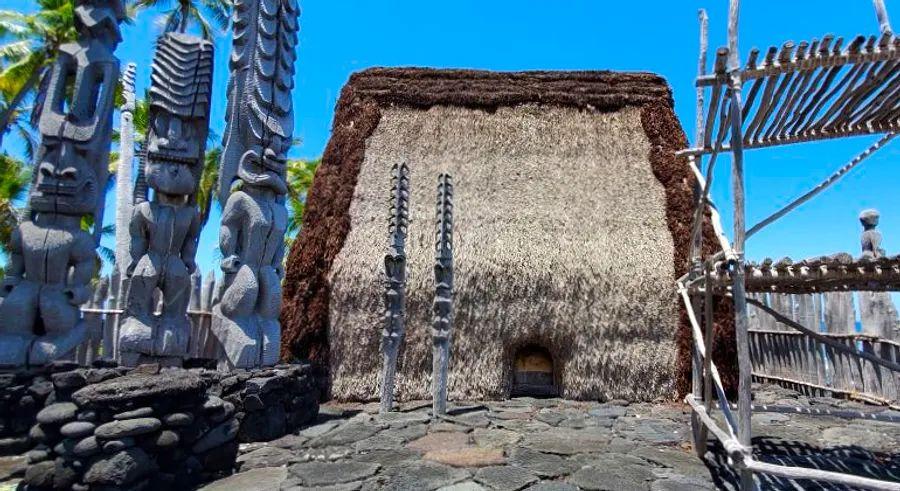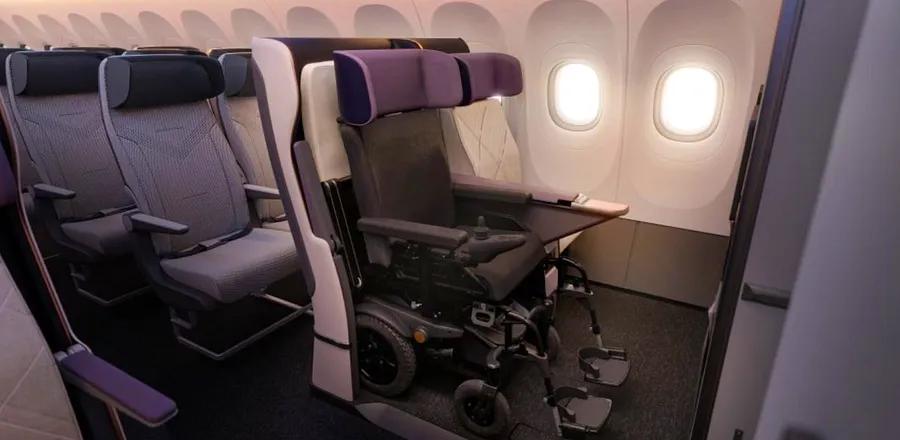13 powerful websites that share the stories of Asian Americans and Pacific Islanders in the U.S.

It seems like every week we’re hearing about new, troubling reports of attacks targeting Asian Americans and Pacific Islanders in the U.S.
A recent study reveals that anti-Asian hate crimes have surged by 164% in 16 of the country’s largest cities and counties over the past year.
This rise in violence has underscored the urgent need for Asian American and Pacific Islander voices to be heard. Thankfully, Americans have numerous opportunities to explore these narratives at historical sites across the U.S.
Here are 13 notable locations that offer a richer understanding of Asian American and Pacific Islander history, especially during Asian/Pacific American Heritage Month and beyond. Make sure to check the sites for updates on visiting hours as they may have changed due to the pandemic.
Angel Island Immigration Station (San Francisco Bay Area)
Nestled on Angel Island in San Francisco Bay, the U.S. Immigration Station (USIS) served as the primary entry point for immigrants from Asia after its opening in 1910. Often referred to as the 'Ellis Island of the West,' nearly 500,000 people from over 80 countries passed through or were detained there between 1910 and 1940.
A significant number of those held at the station were Chinese, due to the 1882 Chinese Exclusion Act—the first law in U.S. history to limit immigration based on race. The law allowed only specific groups of Chinese immigrants to enter the country, leading to a surge in individuals using fraudulent documents.

In an attempt to enforce the Chinese Exclusion Act, many Chinese immigrants faced intense interrogations at Angel Island. They were confined to overcrowded, unsanitary conditions, where they were detained for weeks or even months before either being deported or granted entry into the U.S.
Today, the U.S. Immigration Station has been transformed into a museum dedicated to the nation's immigration history. For many, the most emotional part of the visit is encountering over 200 poems carved into the barrack walls by the detainees.
Angel Island Immigration Station, San Francisco Bay, CA, + (415) 658-7691
Iolani Palace (Honolulu, Hawaii)
This historic landmark in Honolulu once served as the residence of Hawaii's monarchs, including the kingdom's final rulers, King Kalakaua and Queen Liliuokalani. Built in 1882, Iolani Palace showcases exquisite Italian Renaissance-style architecture.

After the overthrow of the Hawaiian monarchy and a failed attempt to reinstate Queen Liliuokalani, she was accused of treason and imprisoned for nearly eight months in a bedroom upstairs in 1895.
Once used as government offices for many years, the palace was meticulously restored and opened to the public in 1978.
Visitor Information: Guests are expected to dress respectfully, as the palace is regarded as a sacred site. Audio tours are available on Fridays and Saturdays, while docent-led tours are offered on Wednesdays and Thursdays.
Iolani Palace, 364 S. King St., Honolulu, HI 96813, + (808) 522-0822
South Asia Institute (Chicago)
Founded by art collectors Shireen and Afzal Ahmad, the South Asia Institute showcases an impressive collection accumulated over 45 years, ranging from Mughal miniature paintings to modern South Asian artworks.
“The Sindhu Project: Enigma of Roots” will make its debut on June 10, offering an artistic interpretation of archaeological sites and relics from northwest India and Pakistan.

Visitor Information: The South Asia Institute is currently open by appointment only while preparing for its next exhibit. For details, email [email protected]. An online exhibit titled “Diasporic Rhizome” explores the diaspora concept through the works of 21 South Asian artists.
South Asia Institute, 1925 S. Michigan Ave., Chicago, IL 60616, + (312) 929-3911
Korean Bell of Friendship (San Pedro, California)
Weighing 17 tons, this beautifully engraved bronze bell, located in the Korean-American Peace Park at Angels Gate Park, was a gift from South Korea to the United States in 1976 to commemorate both the enduring friendship between the two nations and the U.S. Bicentennial celebration.

Korean American actor Philip Ahn played a key role in bringing the bell to the U.S. The Korean Bell of Friendship was designated a Los Angeles Historic-Cultural Monument in 1978. It is rung on holidays, including Korean American Day on January 13.
Visitor Information: San Pedro, the community where the bell is located, is approximately 25 miles south of downtown Los Angeles. The Korean Bell of Friendship is located at the corner of 37th and Gaffey Street and is open to the public free of charge.
Korean Bell of Friendship, 3601 S. Gaffey St., San Pedro, CA 90731, + (310) 548-7705
Watt Munisotaram (Hampton, Minnesota)
Located thirty miles south of St. Paul, Watt Munisotaram is home to the largest Cambodian Buddhist temple in the United States. Minnesota is home to about 10,000 Cambodians, most of whom arrived in the 1970s as refugees fleeing the Khmer Rouge regime. The temple serves as a central spiritual and community gathering spot.

The 40-acre site features an older temple that serves as the monks' residence, along with shrines, meditation halls, gathering spaces, and the intricately designed 60-foot-tall main temple building.
Visitor Information: The best time to visit is mid-April when thousands gather to celebrate Cambodian New Year. As this is a sacred site, visitors should dress respectfully with shoulders and knees covered. Volunteer guides are available, and it's recommended to bring cash for donations.
Wat Munisotaram, 2925 220th St. E., Hampton, MN 55031, + (651) 463-3101
Paolo Agbayani Retirement Village (Delano, California)
Filipino farm workers played a pivotal role in the agricultural labor movement of the 1960s. The Paolo Agbayani Retirement Village was established in 1974 by the movement, using volunteer labor, to provide support for elderly Filipino farm workers.

At the time, the ratio of Filipino men to women was 14 to 1, and because Filipino men were prohibited from marrying outside their race, many were left without families after being displaced during farm worker strikes. The village is located within The Forty Acres, the historic Delano site that served as the headquarters for the United States' first permanent agricultural union.
Visitor Information: Managed by the Cesar Chavez Foundation, the property continues to house residents. Tours may be available by appointment—call (661) 725-4347 for more details.
Paolo Agbayani Retirement Village, 10701 Mettler Ave., Delano, CA 93215, + (661) 725-4347
Latte Stone Park (Hagåtña, Guam)
The Chamorro, Guam’s indigenous people, first arrived on the island around 4,500 years ago, migrating from Southeast Asia and the Philippines. Visit the Senator Angel Leon Guerrero Santos Latte Stone Memorial Park in Hagåtña, Guam, to explore the ancient latte stones, which are remarkable stone structures that hold historical significance.

Each latte stone consists of a bowl-like rock called a “tasa,” placed atop a tall stone pillar. The tallest latte stones rise nearly 20 feet, and the oldest examples date back 1,500 years. No other culture is known to have used this distinctive construction method.
Visitor Information: After exploring the park, take a short five-minute walk to the Dulce Nombre de Maria Agana Cathedral and Basilica, which was built by Guam’s first missionary in the 17th century.
Latte Stone Park, 232 W. O’Brien Dr., Hagåtña, Guam 96910-5130 Mariana Islands, + (671) 646-5278
Hakone Estate and Gardens (Saratoga, California)
A newly unveiled exhibit titled “Hakone Gardens and Executive Order 9066” sheds light on the story of James Sasaki, a gardener and caretaker at Hakone Gardens, and his family’s forced internment at the Topaz War Relocation Center in Utah.
In 1942, President Franklin Roosevelt’s Executive Order 9066 led to the internment of Japanese Americans in camps across the U.S. (A museum dedicated to the Topaz internment camp in Utah is temporarily closed due to Covid-19.) The exhibit at Hakone Gardens also features accounts from two trustees who share their own internment stories.

The gardens and estate, including the Upper House and Lower House built in traditional Japanese architectural style, were designed for philanthropists Isabel and Oliver Stine by Japanese imperial gardener Naoharu Aihara, architect Tsunematsu Shintani, and various artisans in the early 20th century. Today, the site is managed by the Hakone Foundation.
Hakone Gardens, 21000 Big Basin Way, Saratoga, CA 95070, + (408) 741-4994
Wing Luke Museum of the Asian Pacific American Experience (Seattle)
Located in Seattle, this 60,000-square-foot museum uses exhibits and programs to explore the history, culture, and identity of Asian Pacific Americans. A standout permanent exhibit honors Wing Luke, the first Asian American elected to public office in the Pacific Northwest.

One of the museum’s exhibits, “Vietnam in the Rearview Mirror,” explores the experiences of Vietnamese immigrants and refugees. Another, titled “I am Filipino,” delves into the history and identity of Filipino Americans.
Wing Luke Museum, 719 S. King St. Seattle, WA 98104, + (206) 623-5124
Locke Historic District (Locke, California)
Founded in 1915, this Northern California town is recognized by the National Park Service as the most intact example of a rural, agricultural Chinese American community in the United States.
By the 1920s, around 600 people had settled here, creating a thriving community with fish markets, gambling halls, schools, restaurants, brothels, herb shops, and more. While the town saw periods of decline from the 1930s onwards, it remains a small community today. In 1990, it was named a National Historic Landmark.

Notable attractions include the Locke Chinese School, the Locke Boarding House Visitor’s Center, and the Dai Loy Museum (currently closed), which displays exhibits on gambling history.
Details and tips: Visiting Locke is free of charge, but please be mindful that it is still a residential area, so respect the privacy of its inhabitants. Docent-led tours for groups of 10 or more are available by reservation from Friday to Sunday through the Locke Foundation.
Locke is located approximately 30 miles south of Sacramento.
Pu’uhonua o Hōnaunau National Historical Park (Hōnaunau, Hawaii)
Spanning over 420 acres on the Big Island, Puʻuhonua o Hōnaunau National Historical Park preserves over 400 years of native Hawaiian heritage.
Key points of interest include Hawaiian temples, the ancient Ki’ilae fishing village, and the 1871 Trail – once a major trading route for local communities. Visitors can also enjoy cultural demonstrations featuring Hawaiian games and craft-making.

Pu’uhonua O Hónaunau National Historical Park, State Hwy 160, Hōnaunau, HI 96726, + (808) 328-2326
Wat Nawamintararachutis (Raynham, Massachusetts)
Also referred to as the NMR Buddhist Meditation Center, this 110,000-square-foot temple stands as the largest Thai Buddhist temple in the United States.
Inside the expansive building, you'll find a meditation room, a museum honoring the late King Bhumibol Adulyadej, a library, accommodations for monks and visitors, a serene courtyard, and a 180-foot tall, dazzling golden spire.

Constructed in 2002, Wat Nawamintararachutis integrates New England-style gables into its design. The location was chosen for its proximity to the birthplace of King Bhumibol in Cambridge.
Details and tips: Guided tours are available for groups of 10 or more, or you can explore the temple at your own pace. The site also offers free yoga classes, meditation sessions, Dhamma talks, and Sangha chanting for visitors.
Wat Nawamintararachutis, 382 South Street East, Raynham, MA 02767, + (508) 823-1800
Wakamatsu Farm, located in Placerville, California, is a historic site that began as the first Japanese settlement in the U.S. in 1869.
Founded in 1869, the 272-acre Wakamatsu Farm became the first Japanese settlement in the U.S., where Issei immigrants cultivated crops like tea, bamboo, rice, persimmons, and mulberry trees for silkworms.

Wakamatsu Farm remains operational, leasing 110 acres to independent farmers for livestock and crop cultivation. Visitors can enjoy activities like touring the on-site tea house, walking the wheelchair-accessible lake trail, and more. The farm also hosts events throughout the year.
Details and tips: The Wakamatsu Farm is owned by the American River Conservancy, which acquired the property in 2010. To participate in events or tours, check their schedule. Docent-led tours are available if booked at least two weeks in advance. Visitors are also welcome to enjoy open farm days for hiking, picnicking, and exploring the grounds.
Wakamatsu Farm, 941 Cold Springs Road, Placerville, CA, + (530) 621-1224

1

2

3

4

5
Evaluation :
5/5